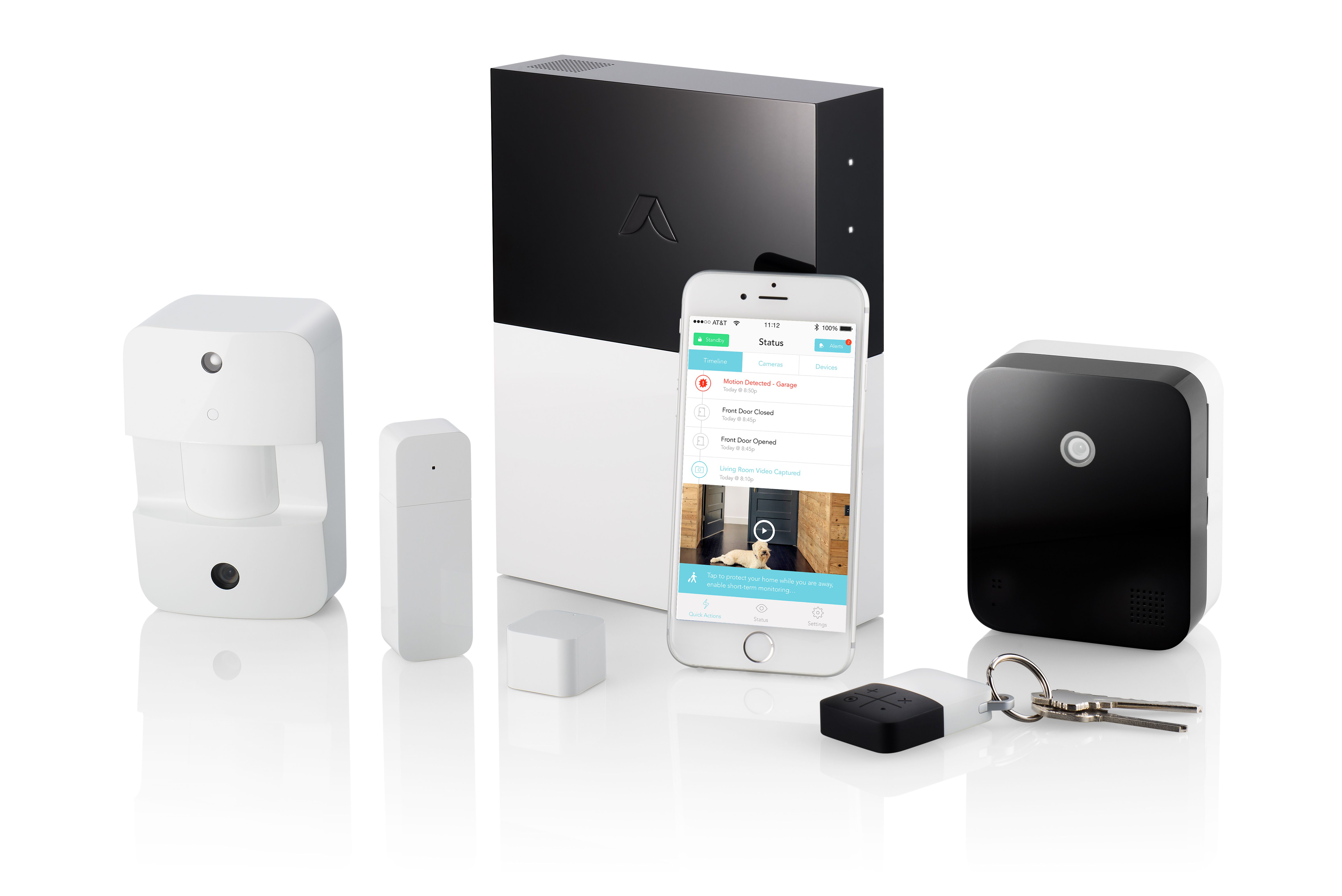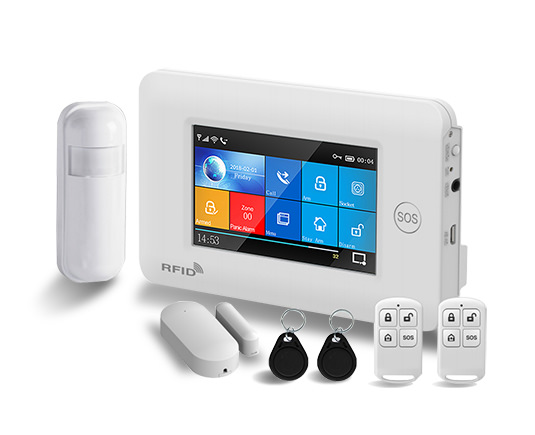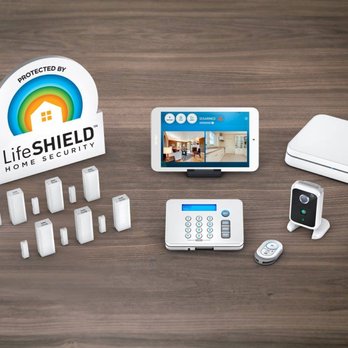
Simplisafe has a variety of security products, such as sensors, cameras and other security devices. It has a dedicated customer service department that can help with any problems you might encounter.
The system uses wireless sensors to detect motion inside your home. It then sends out a signal to base station, who alerts you and/or a monitoring service.
The system is powered by a cell connection, and it has a battery backup so that you will not lose Internet access or power if Wi-Fi fails. This system also includes a free subscription to cellular data and minutes for the lifetime of the device.
Fast Protect(tm), the feature offered by the company to help prevent false alarms and suspicious activity, demonstrates that safety is of paramount importance. It prioritizes verified alarms to speed up the police response time and keep you safe.

SimpliSafe offers systems that are extremely easy to install. Their customer service representatives will be happy to answer any questions you might have or help with problems. You can also upgrade or replace devices at any point.
It's easy to choose sensors and cameras, as well: you can select from a variety of options based on what suits your needs. There are many options, including motion sensors, door and windows sensors, smoke and CO detectors, as well glass break detectors.
Some more advanced kits include features such as panic buttons that silently alert the monitoring centre if an intruder is close enough to trigger the alarm. The alarm can be set off by a single button, keypad, and optional keychain remote.
You can select from a wide range of cameras, including 720p HD models and 1080p HD models. The latter will allow you to see who's at the front door as well as what's on the other side. Some cameras come with the option of visual confirmation, allowing the monitoring station to view the video feed if an intrusion occurs.
This is a great way to keep your kids or pets safe without breaking the bank, and it's a great alternative to an expensive CCTV system.

SimpliSafe integrates Amazon Alexa, allowing you to arm and disarm your alarm remotely from any location. This company also supports Nest. It's well worth a try if you want a smart home system that has a security focus.
The company's customer service team is very good. They are always available to assist you, whether you need help setting up your alarm or have a general question. You can reach the company via phone, email or social media.
The BBB has given the company an A+ rating. It offers 60-days money-back guarantees and all equipment comes with three-year warranties.
FAQ
Which home security system is the most highly rated?
ADT Pulse (Ring Alarm), Vivint SmartHome Security, Protect America, and Vivint SmartHome Security are the most well-known home security systems.
What is the best wireless security device you can purchase?
D-Link Wireless Security System is the best wireless security system. It is the most affordable system available. It includes everything you need. It includes a motion sensor, camera, and remote control. It is easy to connect it and follow the instructions.
Which home security system or home surveillance camera is best?
Home security systems can be more effective than home cameras as they can detect sound and movement even though no one is present in a room where the system has been installed. Home security cameras are easier to mount on doors and windows than those of home security systems.
How do I decide between the different types of home security system?
You need to assess the level of threat in your community. If there is a lot crime in your area, you may want an alarm to sound when someone enters your home. In rural areas where there are fewer burglaries, you might not need as much security.
Consider whether you are prepared to pay more for advanced features. Some systems have cameras built in while others do not. Some allow you monitor your house remotely while others require you physically to view the footage.
Statistics
- Most home security companies will charge you around 75% of the remaining term of your contract if you cancel early—and some require 100%.Related questionsWhat type of contract length can I expect from security providers?Home security system cancellation (safewise.com)
- Depending on your insurance, 24/7 professional monitoring may qualify you for as much as 15% off your premium. (safewise.com)
- Related questionsHome security systems that are 100% DIY (safewise.com)
- Cove sets you free without punishing penalties and fees, unlike other security solutions that charge 75% to 100% of your remaining contract. (safewise.com)
External Links
How To
How to Install an Home Security System
A home alarm system is a device which monitors your home and alerts when there's an activity. It could include a motion sensor or doorbell camera, smoke detectors, flood alarms, carbon monoxide detectors, burglar alarms, and flood alarms. A home security alarm system often includes one or two sensors (e.g., motion detections), which send signals to the control panel when they detect movement. The signals are then sent by the sensors to a control center where they are recorded and monitored. If there's something wrong, like someone breaking into your house, the control panel sends out an alert to your phone, tablet, computer, or voice assistant. The control panel will notify you immediately so that you can take corrective action.
First, you must choose the right type sensors for your home to install a home security system. There are two main types: passive and active sensors. Passive sensors don't require batteries; they just pick up sounds and vibrations from their surroundings. They include doorbells, sirens and buzzers. Active sensors use electricity to transmit data. These sensors include motion sensors and cameras.
There are many sensors brands today. Each brand has their own pros and cons. For example, some sensors are weatherproof, while others aren't. Some of them have built in speakers so that you can still hear them from outside. Some only work indoors. Some are basic while others offer advanced features, such as night vision.
After choosing the best sensor type for your property you can choose a manufacturer. This will help you ensure your sensors work well together. There should be many options at your local hardware store.
After choosing a brand of sensors to use, you can decide how many to purchase. Depending upon whether they live alone or in a group, most people begin with one or two sensors. You may want to consider purchasing more sensors in the future if possible.
Next, decide where you want the sensors to go. Do you want them near windows and doors? Are they best kept hidden? Before you put them anywhere on your property make sure you get permission. Make sure that they won't cause interference with any other electrical outlets.
You now know where to place your sensors. Now you need a way for them to be connected to your control panel. You might need a power adapter for your setup. Once everything is in place, you can start to monitor your property.